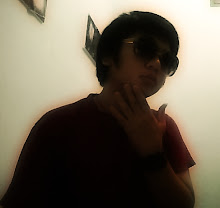
Hello, Beraudiovisual's friends. Do you know, the difference between the filming of a television studio and a portable camcorder amateur is like going from a moped to a Harley Davidson. If you shoot in a studio, you're probably working on a talk show or news broadcast, so that this information applies primarily to people.
1. First understand what you do not have to. Exposure is controlled by the video engineer, who is also responsible for ensuring that the cameras are aligned so that the colors match. A good engineer must regularly match the color saturation and to ensure that the emphasis on performance is constant.
2. The cameraman in the studio, you are responsible for focusing, framing and composition. Some leaders are open to show them the proposed strike. Another rule with an iron fist, and want only what they expect. When working in a variety of animals, you know what they want.
3. Understanding third parts of the camera and what they do. You have a studio type viewfinder that displays an image in black and white. You will see the entire video image so that the design, the realization that, after
the release of most TVs will not see the edges you do, then add a margin around your ideal image. Always start with the configuration of your monitor bar. Unlike a camera in the new configuration, ENG, you have no chance to make a diopter adjustment so it is essential that if you need glasses you use them. Choose reading glasses, long distance impostors or even bifocals to ensure a clear direction.
4. Make sure the phone works both ways so you can listen to your manager and contact her. Since working in a direct cut, remember that you are hearing a lot more than you. I pulled many a show without a word to the control room. While the main off-line, had no time for anything but the most important observations of cameramen.
5. From the top you have a camera on a tripod, is to expand the handlebars like a motorcycle. On the left you will find your focus controller, manual tube connected to the cable is pushed in front of goal. When it puts the focus on change. On the right side is the zoom control, which is motorized. Tripod vary depending on configuration. Find out where the locks and drags you have. Cancel locks and make sure that the camera head is perfectly balanced from front to back. If you can not frame a shot and look to drift downwards or upwards. Set the drag so you can apply with equal force and pan and tilt.
6. As soon as you adjust the viewfinde and stand, ask the technician to take the camera away from the bars. Discover how much energy it takes a motorized zoom lens zoom control to achieve the desired speed. I do not know in which direction to push the zoom zoom in and where to go. Orientation, to learn that the direction of changing the focus from the knobs, or closer. You should know instinctively guided, so that you do not think when given the command. In practice, the wheels in motion PEDS truck or doll. Ped up and down to learn a lot about the power you need.
7. Understanding the controls. Others are implied. If they tell you to approach a person will automatically be inclined to give your site the subject's head. Do not forget to tilt down as you zoom. In a study environment that are generally designed to promote a subject, maybe two. The directors hope to keep these people adequately supervised after receiving your order. "To Peter" or "to stand" is a vertical movement of the camera pedestal. Below is the opposite. Dolly inside or outside refers to the camera roll toward or away from someone. Road transport is rolling the camera left or right. D'arc is to create a curve with his camera rolling. Zoom Zoom presses alone. A place is just the opposite. Pan is an axis from left to right in the camera head. Inclination is to turn your head up or down. Be sure to leave a gap of lead, so a person is slightly off center. If you talk about a topic more space on this side.
Advice
As mentioned above, you must have the focus back. Be sure to zoom in on your subject's eyes and then extend their framework to the end.



4 comments:
nice article :)
Thanks, life style :D
great posting friend & thanks for sharing
Thanks, BRI jakarta... happy reading :D
Post a Comment